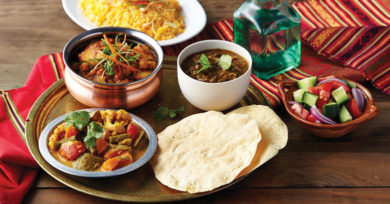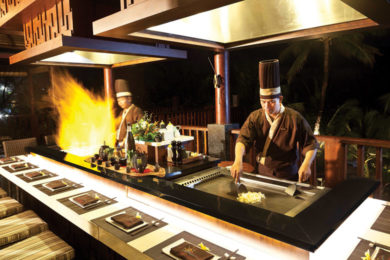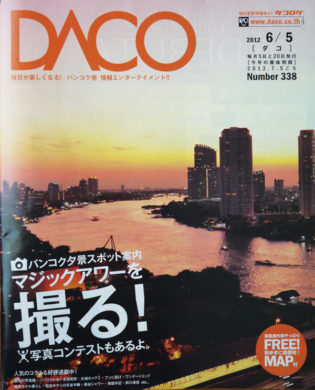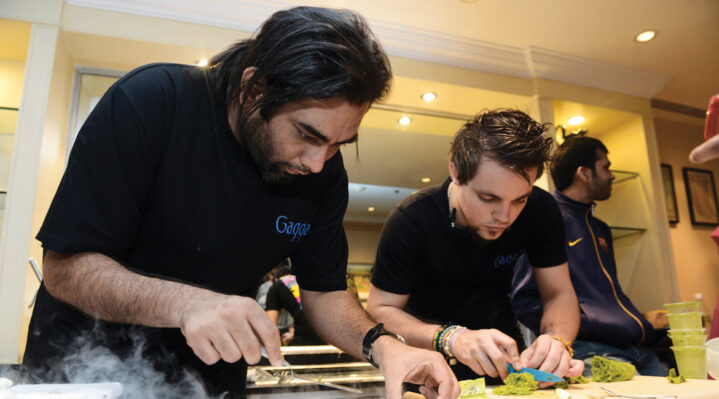
Expat communities in Thailand: The changing foodscape
This rich, vibrant and ebullient land of smiles, food, beaches and romance owes a lot to its cultural diversity. But what is the history behind its expat communities, and how have they contributed to Thailand’s economy, culture and heritage?
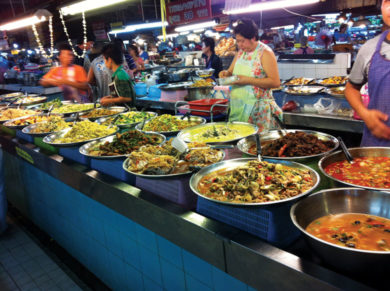
Join Expat Life as we delve into the social makeup of the country … with the food scene right at the heart of it. Here in Bangkok we are blessed with an abundance of food at affordable prices. You could encounter equally delicious dishes at the stall of a creative street vendor as you could while dining at the hands of a Michelin star chef is opulent surroundings. The food is generally more affordable and of far greater quality than you’d expect in Europe or North America. With hundreds of miles of coastline, and an entire kingdom of fertile lands, Thailand enjoys an abundance of natural produce that are rich in flavour. The fruits are so sweet and juicy, vegetables emit vivid colours, rice varieties are aromatic, by Wentworth Power This rich, vibrant and ebullient land of smiles, food, beaches and romance owes a lot to its cultural diversity.
But what is the history behind its expat communities, and how have they contributed to Thailand’s economy, culture and heritage? and the herbs and spices activate and challenge every taste receptor in the tongue. No food in this land of plenty need ever be served bland. Northern Thai cuisine traditionally leans towards broths and dishe that are steamed or boiled, techniques heavily influenced by their Mekong River neighbours in Laos, Cambodia and Vietnam.
The Isaan province, in the Northeast of the country, is famed for its intense, spicy flavours, such as fiery chilies, strong fish sauces and sour bites. You can find sticky rice and the iconic papaya salad as everyday staples here. Down south, where coconut groves produce enough for local consumption and global exports, dishes are driven by spicy coconut curries and seafood. Combine this splendid combination of food heritage with the forces of globalisation, a burgeoning middle class that seeks new dining experiences, and a fine dining scene that is increasingly gaining recognition for its excellence on the world stage.
It is clear that the country is reaching its zenith in gastronomic superiority and we are truly fortunate to be living here. In particular, the injection of different migrant communities into the fabric of Bangkok over the last couple of centuries has helped to shape the colour and flavour of its neighbourhoods. Each enclave draws on their influences from home to contribute to a rich, multicultural tapestry across the capital; the most prominent being Chinese, Japanese, Western and Indian.
Each has played a significant role in shaping the Thai economy, culture and its cuisine. In the coming months, Expat Life will produce a series of features that aims to draw a culinary mapping of Bangkok and its international communities. We will speak with prominent businesses andspokespeople from each community to better understand their history and impact on the country. And what better way to do it than through their cuisine? Some people live for food. Many eat just to survive. And most eat simply because they are hungry. But food plays an inextricable role in the daily lives of every community. It is integral to the customs and rituals of a society, its hospitality, celebrations and religion. In this edition, we delve into the history of three influential communities: Japanese, Indian and Lebanese.
Do you have stories to share about the history of your community in Thailand? Please get in touch with [email protected]
An outward looking, younger generation Mr Singh has witnessed firsthand the change in tastes within the catering sector and enthusiastically chimes the changes. According to the restaurateur, lots of Thai people are keen to try new cuisines; especially the younger crowd. He feels this is augmented by Thai students who study abroad and are influenced by their international friends. In his experience, Thais are sensitive to the strong smells and oily dishes. “In the beginning they didn’t like the smell of lamb,” he says.“The kitchen has had to adapt creating a balance of spices with no one flavour dominating the others”. For example, they tend not to use whole masalas because they are too intense for local tastes.
“The kitchen has had to adapt creating a balance of spices with no one flavour dominating the others.”
However, Mr Singh works hard to retain the authentic, signature flavours of Indian cuisine and imports his ingredients from his home country. “Chickpeas imported from Burma do not cook the same way. The soils, rainfall, altitudes all have an impact on the quality,” he explains. This goes for his chefs too. “I never allow anyone other than Indians to touch my pots and pans”, he jokes.
Over the last couple of years, a wealthier middle class has sought new experiences. CJ believes that as their appetite for adventure grows, so too does the popularity of Indian cuisine. This market demand has been met by individual ntrepreneurs like CJ, not the chains. In the fine dining sector, local favourite Gaggan Anand is leading the charge to redefine our perceptions of Indian cooking on the world stage. His ability to reinvent himself and his molecular cooking techniques continues to win over the judges. In March, his eponymously named restaurant was crowned Asia’s Best Restaurant for the third year running, placing seventh in the world’s best list. Public opinion is often divided over the tasting menu with tiny portions, but Mr Singh says the Indian community is very proud of the master chef and all his achievements.
The Japanese in Thailand
- Population in Thailand: approx. 65,000 (50,000 in Bangkok)
- Neighbourhoods: along Sukhumvit Road, between Phrom Phong and Ekamai, Bangkok
- Fast facts: Over 2,300 Japanese restaurants in Thailand
- Famous foods: Sushi: bite size combinations of vegetables and raw fish with cold, cooked rice; Ramen: a bowl of hot broth filled with fresh wheat noodles, topped with thin slices of meat; Tempura: lightly battered, deep fried seafood and vegetables.
There’s been a quiet transformation in the Thong Lor area of Bangkok in recent years. You’re as likely to hear Japanese spoken there as you are Thai. Along Sukhumvit between
Phrom Phong and Ekkamai, the neighbourhood has become extremely desirable among young Japanese families who’ve moved to Thailand to service the 4,500 Japanese companies which have sprung up around the country. A favourable exchange rate for Japan has meant Thai labour is cheap for manufacturing companies like Toyota, Honda and Canon. And the influx is not about to stop. Medical, electronics and auto industries are raising the investment bar, while garment, chemical and renewable energy sectors are showing increasing interest too.
In the past four decades, official figures show a tenfold increase in the numbers of Japanese living in Thailand, an estimate that many believe is way too low. Maintaining a strong sense of community, the dramatic increase in the Japanese population has led to a range of entrepreneurial opportunities to serve their needs, not least the desire for news from home, and to provide for the distinctive taste for Japanese cooking. Mikkio Numadate was one of thousands of Japanese to arrive in Bangkok in the late 1980s. Contracted through Kyoto News, his role was to keep the growing Japanese population in Thailand updated on news stories from back home. As the numbers living here grew, Numadate spotted a business opportunity; providing targeted news and features to the burgeoning community.
In 1998, the first print edition of Daco, a lifestyle magazine for the expat community, was distributed in Japanese restaurants, supermarkets and book stores. The magazine covers wide ranging themes like food and travel, as well as special features such as ‘How to die in Thailand: arranging your cremation’. According to Numadate, the Japanese are keen readers of practical information. This first wave of Japanese migration brought an affluent crowd of professionals, employed by large corporations and government organisations, almost entirely men. Nowadays, there is a much better gender balance and a community that is far more reflective of society back home. The families tend to forge strong social links through their schools, and mirror their local prefectures in Japan. This is more about regional dialects than anything else.
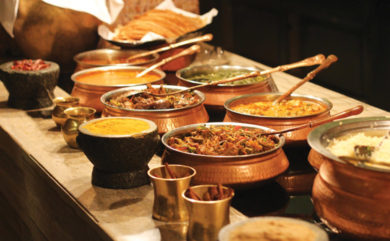
The more recent trend sees an uptick of younger Japanese moving to Thailand to work for Japanese call centres and other language services. Their pay may be less than half what they could earn in Japan, but by living in Thailand they can take advantage of the country’s low living costs. An increase in popularity: gaining a taste for Japanese Mikio met his wife, Kumi Yuki, when she arrived in Bangkok two decades ago and started her own business. With their different skills, Mikio and Kumi reflect the changes the arrival of the Japanese has brought to Bangkok. Brown Eyes is a popular restaurant on Sukhumvit Soi 11, which breaks the mould of the majority of Japanese restaurants in Thailand It serves a fusion of Japanese and international cuisine; just as you may find in many modern eateries back in Japan. Kumi feels that the most popular perception of Japanese food – either sushi bento boxes, or customers sat in a horseshoe around a chef juggling knives at a teppanyaki steak house – is more of an American clichéd
“Truly authentic Japanese food was initially tasteless for Thais.”


